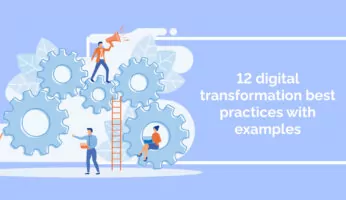
What is an applicant tracking system (ATS) and can they simplify your workflows?
In this post, we’ll learn what their core features are, how they differ from HR software suites, whether you should invest in one, and more.
What Is an Applicant Tracking System (ATS)?
An applicant tracking system is a software application used by HR to organize and streamline recruitment tasks.
Among other things, these applications:
- Index the resumes of potential employees
- Store candidates’ contact information
- Parse and analyze the contents of those resumes
- Search online sights for resumes that may match job criteria
- Provide HR analytics related to hiring and recruitment
- Offer the ability to post job listings on multiple sites
- Integrate with social tools, allowing HR managers to post job listings
- Import candidates’ data from social networks or job sites
These types of features make it easy for HR managers and hiring managers to recruit candidates, get the word out about jobs, analyze the effectiveness of their recruitment processes, and automate digital processes.
The right ATS can save significant time, which is perhaps one reason they are becoming so popular in modern HR departments.
How to Choose the Right ATS
There are quite a few options on the market when it comes to ATS platforms.
Basic tools, such as those geared towards small businesses, will offer several of the features covered above. Some vendors also provide free versions, which may meet the needs of certain users.
Larger and more complex systems, however, include many more features and can cost significantly more. At the lower end, prices will be in the tens of dollars per user per month. More expensive packages will cost several hundreds of dollars, however.
Since there is such a difference in terms of price and features, it is important to start the selection process in much the same way you’d start the recruitment process – by creating a shortlist.
Here are a few tips to help you do just that:
Know your goals
Every organization is different, every company’s HR definition is different, and every hiring manager is different. Therefore, every workflow will be unique.
Before beginning the search for an ATS, know what you’d like to get out of that software and how you’d like your workflow to change.
Set a budget
It is important to know one’s price point.
For many, this may be a hard-and-fast rule, bear in mind that software ROI can offset those costs.
In fact, the right ATS may actually generate ROI – it is therefore best to view these tools as investments, not as expenses.
Make a shortlist of features
Creating a shortlist of features will help you create a shortlist of vendors.
If, for instance, there is a must-have feature on your list, then you can eliminate vendors who don’t offer that feature.
Test and choose
By this point, you should have narrowed the list down to a handful of options.
Choose a few of those that look most promising, then test them out.
If you find one that fits, then consider making a long-term or ongoing short-term investment in the product.
If you don’t, consider trying other options.
Key points to remember
One important point to remember is that your digital workflows can become complex and convoluted if you aren’t careful. The more software you adopt, the messier your digital workplace will become.
Simplifying workflows, therefore, should become a key principle for everyone in today’s world, regardless of your job.
One way to simplify workflows is to use a DAP for HR – these software platforms can be used to simplify your own workflows, as well as core HR processes, such as employee onboarding and employee training.
Another point to remember is that many HR platforms include ATS features in their software suites, as we’ll see below.
ATS vs. HR Platforms: What’s the Difference?
An ATS is dedicated to recruitment, while HR platforms perform multiple HR tasks, such as payroll, attendance, employee communications, and more.
Since certain HR platforms include ATS features, some companies may prefer to invest in an HR platform, rather than a separate ATS.
BambooHR is an example of an HR platform that includes many of the features covered earlier. Since this HR toolbox also includes features for other HR workflows, such as payroll and automation, it can be a useful choice for small businesses that want a one-stop platform.
At the opposite end of the spectrum in terms of complexity is an HCM platform. These platforms, like HR platforms, include a wide range of features and functions – the key difference is that they are designed for large enterprises.
Oracle HCM is one example. In addition to its HCM features, it includes advanced recruitment and applicant tracking features, such as personalized career sites, call scheduling, LinkedIn integration, personalized user experiences, automation tools, and more.
iCIMS Recruit is an example of a recruiting tool that focuses specifically on recruiting. This platform has features that include career site building, assessment, tracking applicants, onboarding, and analytics. It also integrates with major job sites such as Glassdoor and LinkedIn. Since it is geared towards professional recruiters and includes advanced functions, it starts at a higher price – $299 per month per user.
The Bottom Line
ATS software, HR software, and HCM platforms can all streamline the recruiting process. The right tool can cut costs, lighten workloads, increase efficiency, and more.
At the same time, it is worth remembering that these tools can benefit employees. Since, for instance, employees can optimize their resumes with keywords, having and ATS can help companies more easily match up with suitable job seekers.
WalkMe Team
WalkMe spearheaded the Digital Adoption Platform (DAP) for associations to use the maximum capacity of their advanced resources. Utilizing man-made consciousness, AI, and context-oriented direction, WalkMe adds a powerful UI layer to raise the computerized proficiency, everything being equal.



